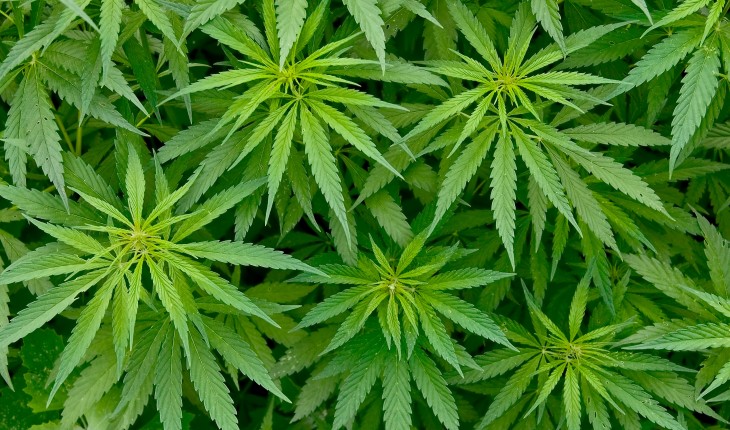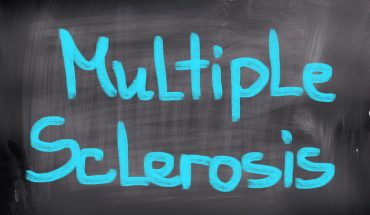In the UK it is estimated there are around three million cannabis users and about one million of those use cannabis for medical reasons. At the moment all those individuals are using it illegally. This article debates the pros and cons of making cannabis a legally prescribable drug for medical reasons.
The Pros
First, there is considerable evidence for the efficacy of cannabis in a variety of conditions. There is certainly quite good evidence of efficacy in spasticity and indeed a cannabis product – Sativex – is legally prescribable for drug resistant spasticity in multiple sclerosis. However, cannabis has also shown to be useful in chronic pain, particularly non-cancer pain and neuropathic pain. A whole variety of other conditions have some evidence of usefulness, including reduction of bladder frequency in multiple sclerosis (and other neurological conditions); management of nausea, particularly in the context of chemotherapy; improvement in sleep; as an appetite stimulant in debilitating conditions, such as those with HIV. There is also some evidence of efficacy in fibromyalgia, rheumatoid arthritis, inflammatory bowel disease, migraine, glaucoma and some forms of dystonia. There is particularly good evidence of efficacy in childhood drug resistant epilepsy (Dravet’s syndrome). Some of the cannabinoids (and there are over 70 cannabinoids in natural cannabis) are known to have a whole variety of interesting properties. Cannabidiol (CBD) is a component of natural cannabis and is known to have anti-anxiety properties and anti-psychotic properties. It also has efficacy in ‘fear’ memory, such as in post-traumatic stress disorder and in some phobias. It may have anti-inflammatory and neuro-protective properties.
Overall there is good evidence (see reference list) of the efficacy of cannabis and indeed it has been used as a medicine for over 4,000 years.
Fortunately, it has few side effects. Generally, the side effects are mild and well tolerated and include dizziness, dry mouth, fatigue and sometimes nausea and some balance difficulties and, of course, in the cannabis that has relatively high THC (tetrahydrocannabinol – the psycho-active component) there is the ‘high’ which is sought by the recreational users. Around 10 per cent of people have troublesome but nevertheless tolerable side effects. Less than 1 per cent of individuals drop out of cannabis studies, which compares to about a 33% drop out rate in opioid studies.
Making cannabis legal will of course take it out of the illegal drug market. At the moment people who wish to buy cannabis have to do so through illegal drug pushers and much of the cannabis purchased is of unknown and sometimes dubious quality. If it is prescribed, then the cannabis can be made of predictable and high quality. The Sativex compound, for example, is of medicine standard and consists of 50 per cent THC and 50 per cent CBD. There are many different types of cannabis with varying ratios of the key cannabinoids. Some people may benefit from a relatively high THC component and some from a relatively high CBD component. Growers can produce products that can be ‘tuned’ to the various conditions for which it is helpful. Making medical marijuana legal would iron out anomalies in the law. Sativex is a legal product. Dronabinol is a synthetic THC and is also legally prescribed. CBD in isolation is not a banned product. Thus the key components of cannabis are in various forms legal yet the use of herbal cannabis (which has less side effects than synthetic products) remains illegal. Frankly, this is rather a daft situation. Eleven European countries, several other countries around the world and 24 US states have now made cannabis legally prescribable and have determined that the benefits outweigh the risks.
The Cons
Most objections focus on the long term side effects. There is some evidence that heavy recreational users of cannabis are at a higher risk of schizophrenia or other psychotic episode. There is certainly a dose response relationship and schizophrenia seems to be mainly triggered in heavy users or those with a family history of psychosis. Obviously this is of some concern but the risk could be mitigated if prescription is allowed by simply stating that schizophrenia or a history of psychosis is a contra-indication.
Other authors have noted cognitive difficulties in heavy recreational users but these problems seem to focus on a reduction of verbal memory in the longer term. Once again this is of some concern but a counter-argument is that legalising cannabis would make proper long term studies possible so these risks can be quantified and action taken to reduce such risks.
Other studies claim a reduction of brain volume, particularly around the hippocampus but the significance of these findings is not certain.
Is there a risk of dependency? The studies show that around 9 per cent of cannabis users become dependent on the product, which compares to around 32 per cent of tobacco users and 15 per cent of alcohol users. A useful article in the Lancet in 2010 convincingly demonstrated that cannabis was overall less harmful than tobacco and alcohol.
Studies in some of the US states, where growing one’s own cannabis is legal, have shown that there is a ‘diversion’ rate. In other words, some of the cannabis grown legally for medical reasons is diverted into the recreational market. Indeed, in Colorado it has been shown that there is four times more production of cannabis than is required for medical use within the state. This is a risk but it is a risk that is much reduced if cannabis is produced by licenced growers who can control the quality and ensure, with licenced pharmacists, a secure supply chain.
Overall there are good reasons to prescribe cannabis. Certainly there are some concerns about long term usage. However, legalisation of cannabis for medical conditions would not only help around a million people in the UK every year who are in chronic pain or troubled by neurological and other conditions but would also allow properly controlled studies to be undertaken to determine with accuracy the efficacy and side effects of the product. At the moment there is a campaign to make medical usage legal – see endourpain.org – and I would encourage readers to sign that petition.
References
Jensen B, Chen J, Furnish T, Wallace M. Medical marijuana and chronic pain: a review of basic science and clinical evidence. Curr Pain Headache Rep 2015; 19 (10): 50
Hill KP. Medical marijuana for treatment of chronic pain and other medical and psychiatric problems: a clinical review. JAMA 2015; 313 (24): 2474-2483
Whiting PF, Wolff RF, Deshpande S, et al. Cannabinoids for medical use: a systematic review and meta-analysis. JAMA 2015; 313 (24): 2456-2473
McLoughlin BC, Pushpa-Rajah JA, Gillies D, et al. Cannabis and schizophrenia. Cochrane Database Syst Rev 2014; 10: CD004837
Borgelt LM, Franson KL, Nussbaum AM, Wang GS. The pharmacologic and clinical effects of medical cannabis. Pharmacotherapy 2013; 33 (2): 195-209
Iversen L. Cannabis and the brain. Brain 2003; 126 (Pt 6): 1252-1270
- The highs and lows of cannabinoid - 6th December 2016
- Medical Marijuana: Should cannabis be prescribed or not? - 6th April 2016







“Other studies claim a reduction of brain volume, particularly around the hippocampus but the significance of these findings is not certain.”
Given that we now know Cannabinoids are potent anti-inflammatories, could it not be the case that in a non-Cannabis user that the brain undergoes a normal amount of inflammation that, presumably, would leaves scar tissue over time and increase the overall size of their brain, and that such inflammation in a Cannabis user is effectively being supressed/treated more throughout their lifetime?
Aside from the fact that cannabis is a vegetable with many of the same nutrients as other leafy greens (like fiber, iron and calcium), it is jam-packed with beneficial cannabinoids that are unique to the cannabis plant. In other words, juiced cannabis is a nutritionally-dense, very potent medicine. The high concentration of cannabinoids in juiced cannabis coupled with the perfect balance of fatty acids could help improve cell function and reduce damage caused by free radicals. Additional benefits of raw, juiced cannabis include reduced inflammation and the facilitation of two-way cellular communication. Many cannabinoids also have anti-tumor properties which are… Read more »
Everyone who cares about Medical Cannabis should know about the Kaiser “Big Data” Bladder Cancer Study which found that men who used Cannabis had a 45% lower rate of Bladder Cancer — the fourth most common form of Cancer.
Kaiser is a MAJOR HMO in the US, and the study involved the medical records of 82,050 men from Northern and Southern California.
The results were presented at the American Urological Association 2013 Annual Scientific Meeting.
Google “Kaiser 45% lower Bladder Cancer”
Excellent Article!
Dr. Sanjay Gupta Says It Best —
“Marijuana isn’t just ‘good medicine’ — in many cases its the only medicine that works!”